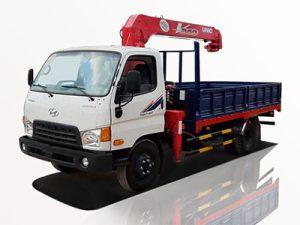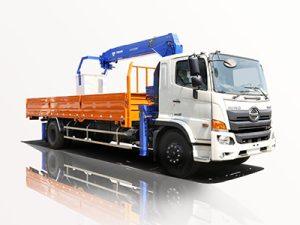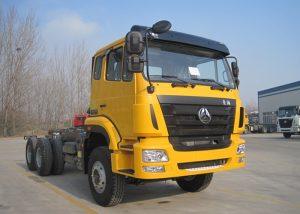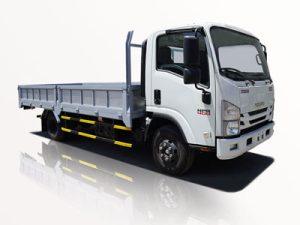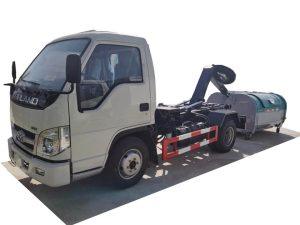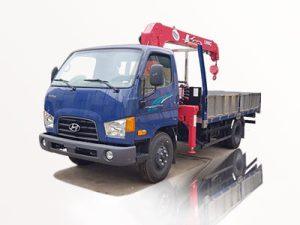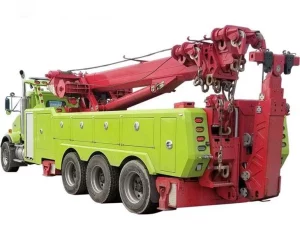Monday to Saturday - 8:00 -17:30
Gasoline Tank Trailers: Understanding Their Importance and Usage
Gasoline tank trailers play a critical role in the transport of fuel across various sectors. Whether you’re a business owner, a truck operator, or someone simply curious about fuel logistics, understanding the workings and significance of gasoline tank trailers is essential. This article will dive deep into the specifications, types, safety measures, and operational aspects of gasoline tank trailers, providing a comprehensive guide on this crucial topic.
Table of Contents
- Introduction
- What is a Gasoline Tank Trailer?
- Types of Gasoline Tank Trailers
- Key Features and Specifications
- Safety Considerations When Using Gasoline Tank Trailers
- Maintenance Tips for Gasoline Tank Trailers
- Regulatory Requirements
- Choosing the Right Gasoline Tank Trailer
- Case Studies
- FAQs
Introduction
The efficient transport of gasoline is vital for industries and consumers alike. Gasoline tank trailers are specifically designed for carrying gasoline safely and efficiently. With an increasing emphasis on fuel logistics and environmental responsibility, understanding the intricacies of these trailers can provide valuable insights into how fuel reaches consumers while adhering to safety and regulatory standards. In this article, we’ll explore the various aspects of gasoline tank trailers, from their types and specifications to safety and maintenance practices.
What is a Gasoline Tank Trailer?
A gasoline tank trailer is a specialized vehicle designed to transport gasoline and other liquid fuels. These trailers are typically towed by a truck and have a specific design that allows for the safe and efficient transport of flammable liquids.
Components of a Gasoline Tank Trailer
- Tank Body: The main structure that holds the gasoline, usually made of high-strength steel or aluminum.
- Pump System: Assists in loading and unloading the gasoline with optimized control for pressure and flow rate.
- Valves: Critical for controlling the release of the fuel, including emergency shut-off and vapor return valves.
- Safety Equipment: Fire extinguishers, spill kits, and equipment to prevent spills during loading and unloading.
Types of Gasoline Tank Trailers
Gasoline tank trailers come in various configurations, each designed for specific applications. Understanding the types can help businesses and operators select the most appropriate one for their needs.
1. Single and Double Axle Tanks
Based on load distribution and weight capacity, trailers can be single-axle or double-axle. Double-axle trailers provide better stability and are commonly used for heavier loads.
2. Horizontal vs. Vertical Tanks
Horizontal tanks are more common for transporting gasoline due to their lower center of gravity, reducing the risk of rollover. Vertical tanks, however, may be used for specialized applications.
3. Hemispherical and Elliptical Tanks
Hemispherical tank designs are often used for high-pressure applications, whereas elliptical designs are favored for standard gasoline transport duties.
Key Features and Specifications
When selecting a gasoline tank trailer, it’s essential to consider several features and specifications that enhance functionality and safety.
Tank Capacity
Gasoline tank trailers can vary in capacity from 1,000 to 11,500 gallons. The capacity chosen should align with the intended use and regulatory requirements.
Material Considerations
Materials play a crucial role in the lifespan and safety of the trailer. Common materials include:
- Aluminum: Lightweight and resistant to corrosion.
- Stainless Steel: Durable and robust, commonly used for heavier applications.
Regulatory Compliance
Gasoline tank trailers must adhere to standards set forth by regulatory bodies, including the Department of Transportation (DOT) and Environmental Protection Agency (EPA). Compliance often includes specific markings, safety features, and maintenance schedules.
Safety Considerations When Using Gasoline Tank Trailers
Safety is paramount when it comes to transporting gasoline. Below are vital safety measures to consider.
1. Proper Training
Operators must be adequately trained in handling fuel and understand safety regulations associated with gasoline transport.
2. Emergency Protocols
Establish clear protocols for emergency situations, including spills, accidents, or leaks. Regular drills can ensure preparedness.
3. Regular Inspections
| Inspection Type | Frequency | Details |
|---|---|---|
| Visual Inspection | Daily | Check for leaks, corrosion, and damage. |
| Technical Inspection | Monthly | Inspect pumps, valves, and safety equipment. |
| Compliance Inspection | Annually | Ensure technology and equipment meet regulatory standards. |
Maintenance Tips for Gasoline Tank Trailers
Maintaining a gasoline tank trailer ensures longevity and safe operation. Here are essential maintenance tips:
1. Clean Regularly
Keep the tank clean from internal and external pollutants that can affect gasoline quality and trailer performance.
2. Regularly Check and Replace Components
Inspect valves, hoses, and pumps for wear and tear, replacing faulty components immediately to avoid operational failures.
3. Monitor Tire Health
Ensure tires are adequately inflated and have sufficient tread to reduce the risk of tire blowouts during transport.
Regulatory Requirements
Certain regulations must be adhered to when operating gasoline tank trailers, which are vital for compliance and safety.
1. DOT Regulations
The Department of Transportation has established various regulations concerning fuel transport, including load limits, vehicle markings, and inspection requirements.
2. Environmental Regulations
Compliance with environmental laws is necessary to prevent spills and accidents that can lead to contamination and substantial fines.
3. Driver Licensing
Drivers must possess the appropriate Commercial Driver’s License (CDL) with endorsements for transporting hazardous materials.
Choosing the Right Gasoline Tank Trailer
Selecting the right gasoline tank trailer can significantly impact your operations. Here are key factors to consider when making your choice.
1. Assessing Your Needs
Evaluate your transport needs, including the volume of gasoline, routes taken, and frequency of transport to determine the appropriate trailer capacity and type.
2. Budget Constraints
Consider your budget for both purchase and ongoing maintenance. While lower upfront costs may be appealing, ensure long-term reliability and compliance.
3. Manufacturer Reputation
Research manufacturers and read reviews to ensure you’re dealing with reputable companies known for safety and quality.
Case Studies
Real-world applications of gasoline tank trailers provide insight into their usage and operational methods. Below are a couple of case studies.
Case Study 1: Local Fuel Distribution
A local fuel distributor utilizes double-axle gasoline tank trailers to transport fuel from distribution points to gas stations. By selecting a robust trailer, the company minimizes breakdowns and maximizes fuel delivery efficiency.
Case Study 2: Environmental Compliance
A major oil company implemented a stringent maintenance schedule for its fleet, leading to zero environmental incidents related to fuel spills over three years. This initiative showcased the importance of preventive measures in operations.
FAQs
1. What is the average lifespan of a gasoline tank trailer?
The average lifespan of a gasoline tank trailer can range from 10 to 20 years, depending on the material quality, maintenance frequency, and usage conditions.
2. How do you load and unload gasoline safely?
Always follow the manufacturer’s guidelines, wear protective gear, and use a pump system equipped with safety features. Use spill containment systems and check for leaks before loading.
3. Are there insurance requirements for gasoline tank trailers?
Yes, operating a gasoline tank trailer typically requires specialized insurance coverage for hazardous materials to protect against accidents, spills, and environmental damage.
4. Can gasoline tank trailers be used for other types of liquids?
While primarily designed for gasoline, many gasoline tank trailers can be adapted for other liquid fuels, provided they meet the safety and regulatory requirements for those fluids.
5. What should I do in case of a spill during transport?
Immediately stop the vehicle, secure the area, and follow your company’s emergency protocols. Use spill response kits and notify local authorities if necessary.
6. How do I ensure compliance with environmental regulations?
Regularly review and stay updated with local environmental laws, maintain proper documentation, and conduct frequent inspections of your equipment to align with compliance requirements.


